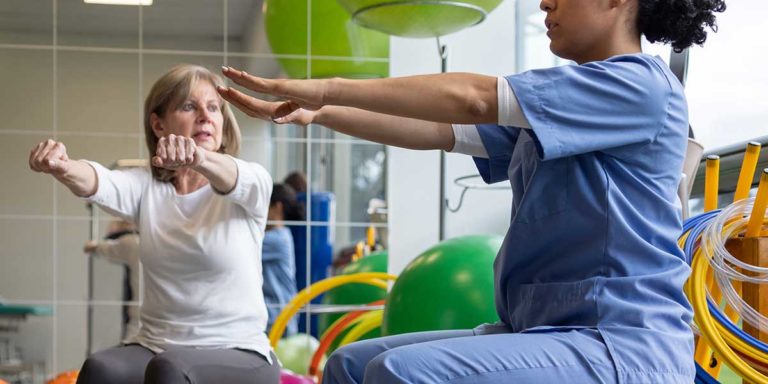Physical Therapy for Balance and Fall Prevention
As we age, maintaining our independence becomes increasingly important. One of the critical aspects of independence is maintaining our balance and preventing falls. Falling can lead to serious injuries, decreased mobility, and a loss of confidence, affecting our overall quality of life. However, with the help of physical therapy, we can proactively address balance issues and significantly reduce the risk of falls.
The Importance of Balance and Fall Prevention
Balance is an intricate process that involves the collaboration of multiple systems in our body, including the vestibular system, vision, and proprioception (the sense of our body’s position in space). As we age, these systems can decline, leading to balance problems and an increased risk of falls.
Falls among the elderly population are a major public health concern. According to the Centers for Disease Control and Prevention (CDC), one in four older adults experiences a fall each year, and falls are the leading cause of injuries among older adults. Fortunately, many of these falls are preventable with early intervention and appropriate physical therapy.
How Physical Therapy Can Help
Physical therapy is a valuable and effective way to address balance issues and fall prevention. A skilled physical therapist can develop an individualized treatment plan to improve balance, strength, and flexibility, tailored to the specific needs of each patient. Here are some ways physical therapy can help:
- Comprehensive Assessment: The first step in the physical therapy process is a thorough assessment of the patient’s balance and gait. This evaluation helps identify the specific areas of weakness and determines the most appropriate treatment strategies.
- Balance Exercises: Physical therapists employ a variety of exercises to target and improve balance. These exercises can include standing on one leg, walking on uneven surfaces, and performing weight-shifting movements. As balance improves, the risk of falling decreases.
- Strength Training: Strengthening the muscles in the legs, core, and hips is essential for maintaining stability and preventing falls. Physical therapists design exercise regimens that progressively challenge and enhance muscle strength.
- Flexibility and Range of Motion Exercises: Improving flexibility and range of motion can enhance mobility and reduce the risk of falls. Physical therapists utilize stretches and movements that help maintain joint function and overall mobility.
- Gait Training: Gait, or the way we walk, can be affected by balance issues. Physical therapists can analyze gait patterns and provide gait training to correct any abnormalities and promote more stable and efficient walking.
- Fall Prevention Strategies: Physical therapists educate patients on fall prevention strategies tailored to their specific needs. These may include home modifications, proper use of assistive devices, and education on identifying potential fall hazards.
- Individualized Home Exercise Programs: To maintain progress and continue improving balance, physical therapists often create personalized home exercise programs for patients to follow independently.
The Power of Proactive Care
The saying “prevention is better than cure” holds true when it comes to balance and fall prevention. Engaging in physical therapy proactively, even before significant balance issues arise, can have a considerable impact on overall well-being. By addressing balance concerns early on, individuals can maintain their independence and reduce the likelihood of suffering from falls.
Moreover, physical therapy is not just for older adults. People of all ages, including athletes and individuals recovering from injuries, can benefit from balance training and fall prevention exercises. Investing time and effort in physical therapy can lead to a lifetime of improved balance, coordination, and overall physical health.
Beyond Physical Benefits
While physical therapy undoubtedly brings numerous physical benefits, it also has a positive impact on mental and emotional well-being. As individuals regain their balance and confidence, they often experience increased self-assurance and reduced anxiety about falling. This newfound sense of security fosters a greater sense of independence, leading to a more active and fulfilling lifestyle.
Physical therapy for balance and fall prevention is a vital component of maintaining independence and a high quality of life as we age. By working with skilled physical therapists, individuals can strengthen their bodies, improve balance, and reduce the risk of falls. This proactive approach empowers people to take control of their health and well-being, allowing them to live life to the fullest with confidence and independence. So, if you or a loved one are concerned about balance or have experienced a fall, don’t hesitate to consult a physical therapist and take the first step towards a safer, more balanced future.







